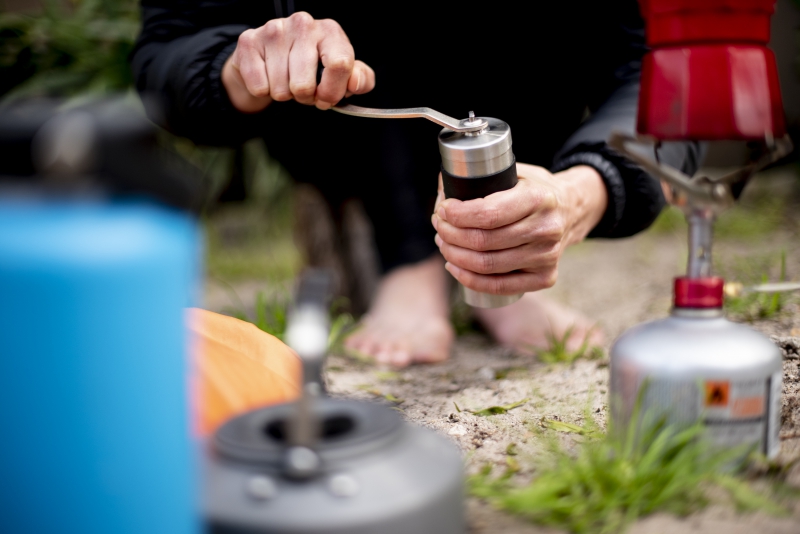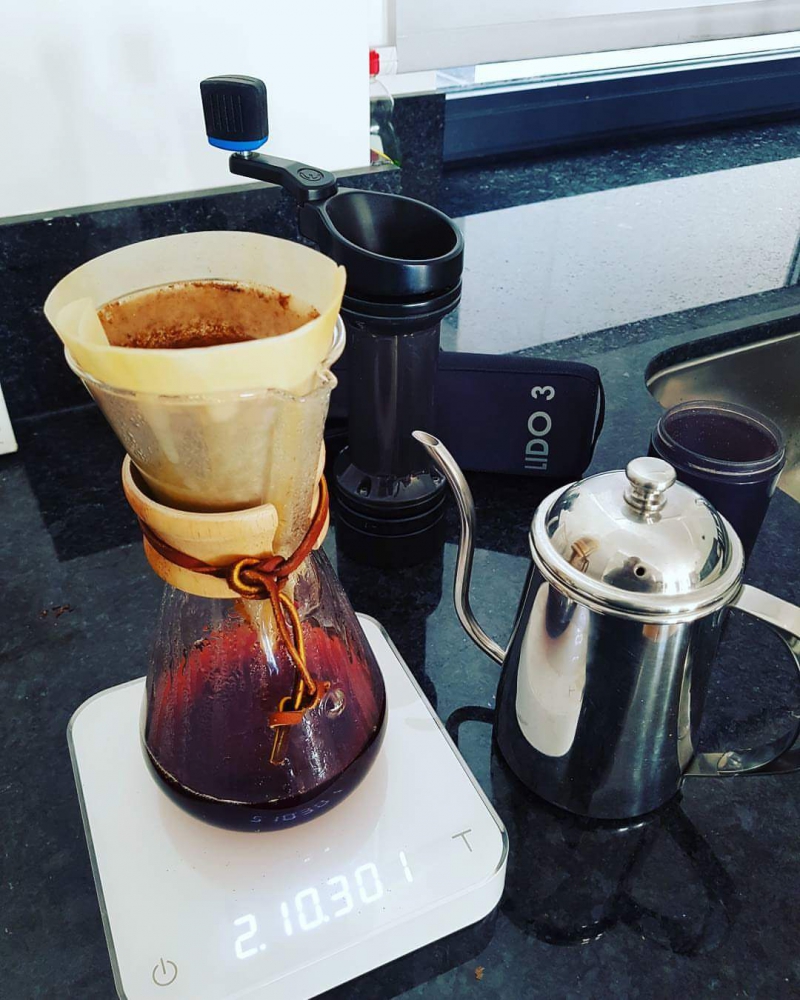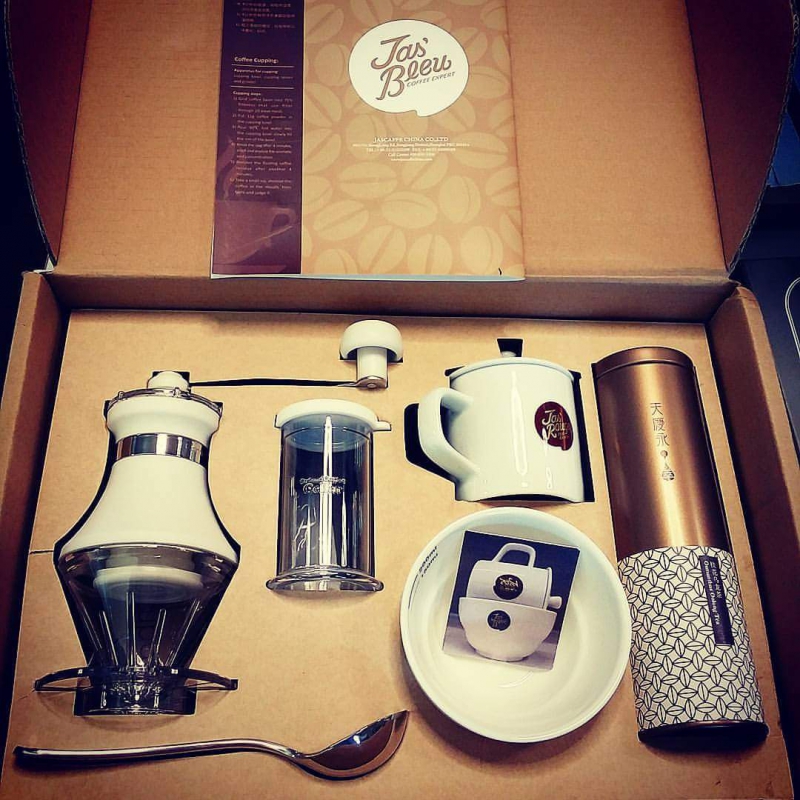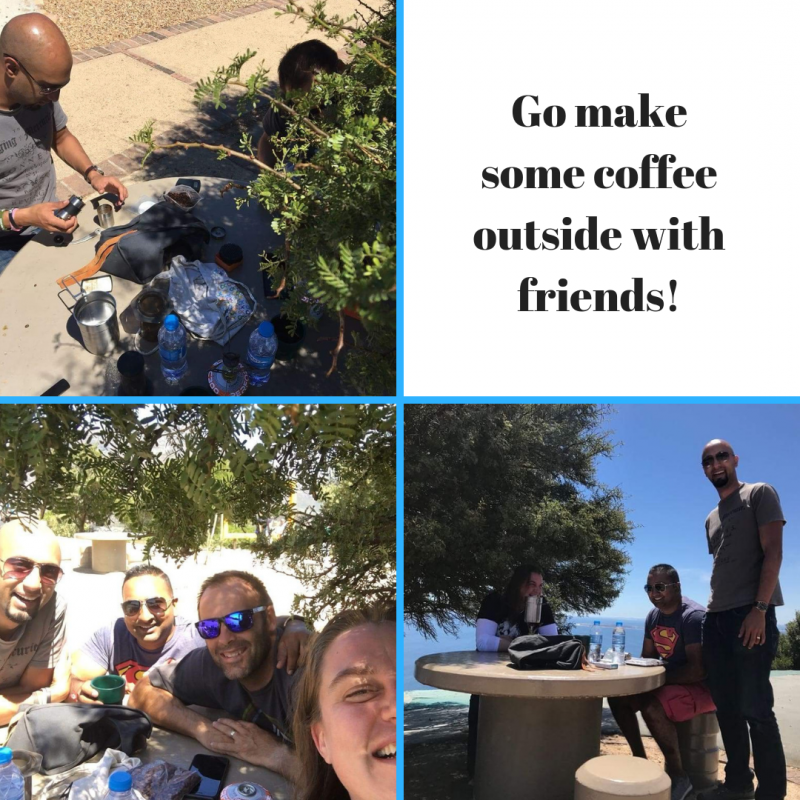
Photo by Craig Kolesky
Hand grinders may seem like a lot of hard work, but Ishan Natalie, 3 time SA Barista Champion, can assure you that this labour of love is totally worth it. Whichever one you choose, it’ll be a gadget you’ll never regret having as part of your home barista kit!
Originally published in Issue 25 of The Coffee Magazine
Words by Ishan Natalie
The world of coffee is forever exciting, with new developments and creativity being showcased constantly; especially recently with home brewing options. I get very excited with new products, particularly those to use at home. With an already vast array of brewing methods and general coffee gadgets at home, I keep a close eye on what is new out there. This can be quite troublesome at times as I am quite impulsive in my purchases for anything I am intrigued by in coffee. I have an awesome wife who supports me in everything I do, but these gadgets are taking up more and more cupboard space in my home and the wonderful wife is less than impressed (haha!). So I’ve had to become a lot more selective with what I invest in for home brewing. It has to make sense – functional, efficient and, most importantly, necessary!
I think we can all agree that most of our coffee smalls and equipment are a luxury and ‘must haves’ based on our lust for lovely things. But do we really need them? Almost everybody, myself included, looks at new aesthetically pleasing brewing equipment (brewers, drippers, machines), but often overlook what I believe is, and should be, the first purchase for brewing coffee. The grinder! Grinders are considered less important to many (even in the coffee world), with people spending heaps of money on espresso machines and cool brewing devices in the pursuit of great coffee. I have learnt that this is the absolute wrong way of achieving better coffee. You see, the brewing devices and machines are merely a way we brew coffee to deliver a style of coffee, they are not the most important tool. That’s where the grinder comes in. Think about the structure of a home – the aesthetic design of the building provides comfort for living and fulfils our desires; but a solid foundation is what keeps it all together and maintains the integrity of the structure. Likewise, the grinder is the foundation to quality in your coffee. If you have a beautiful brewing method, but a poor quality grinder, you merely have a perception of quality, rather than the high quality that is possible with the right foundation.
In short, the grinder is king!
With travelling often for work nationally and internationally, I grew more and more intolerant of poor quality coffee on aeroplanes and in the hotel rooms I stayed in. Freeze-dried coffee was driving me crazy. And so, in 2003 I took the plunge and bought a Gater hand grinder which suited my needs at the time – it was inexpensive, light and compact. This meant that I could chuck it in my luggage or backpack and take it everywhere. This gave me an option for better coffee brewed anywhere. Paired with my Aeropress at the time, it made for a convenient, traveller-friendly brew kit. I loved my grinder, Pinky as I name it, as it was very bright pink. As much as I would get weird looks when I whipped out my very bright pink grinder on the airport floor, I was very proud of it. It opened a whole new world for me when I travelled, I could I enjoy newfound complexity in each extraction. The only downside was that there was no lid to attach to the beans chamber which resulted in the beans sometimes flipping out, messing up my brew ratio. Its amazing price point meant sometimes I struggled with particularly dense beans sometimes hitting a ‘road block’ that put pressure on the bearings, but all in all, it served me well and started my love affair with hand grinders.
Then I came across the Lido 3 by Orphan Espresso. I competed at the 2015 World Barista Championship in Seattle and I remember chilling in the hotel room for some competition preparation and downtime when Craig Charity (SA Barista Champ 2014) walks in with the Lido 3 he got at the Specialty Coffee Association (SCA) Expo . We brewed coffee and he spoke of the grinder with utmost respect and admiration. Just by looking at it and listening to Craig with his immense technical knowledge while he showed us the mechanism of how it was built and worked, I really wanted one. But then the hurdle that made me rethink the decision of buying one – it cost about $195!!! Plus it weighed close to a kilogram. The thought of paying that price for a hand grinder (and a heavy one for my hand luggage and general use) was ridiculous and I decided I couldn’t afford to spend that much on a grinder. Famous last words!
It was the last day of the SCA Expo, and I walked the show floor to explore. I came across the Orphan Espresso stand and got to speaking with owners Doug and Barb Garrott, who were so proud and technically proficient with why they designed the grinder the way it was. I quickly came to believe that this grinder was the best thing on earth: the blades were stainless steel and cut to precision; it cut through coffee like butter and was quick and effortless in grinding; it was easy to adjust the grind, it has a long bean shaft and a rubber lid to prevent the beans from flipping out, whilst also reducing the noise of grinding, supported by the very sharp burrs; it came in a soft padded carry bag with slots in the side that contained a ball point hexagon screwdriver to strip the grinder for cleaning and reassembly, as well as brush for cleaning the blades. An exceptionally well thought out piece of coffee equipment.
So miraculously, I found the money to make the impulse (but calculated) buy. Thank goodness for credit cards! Up until this article was published, it has still been the best investment I have ever made in brewing devices/ equipment to make coffee at home and when I travel. Even with my electric grinder on my kitchen counter, I always reach for the Lido 3. This grinder is so well designed and put together, it’s was worth every penny to me.

I only recently unpacked and started making use of my Grindripper set that I got as a gift on that same trip to Seattle. I found this to be a great alternative for traveling extremely light with very limited luggage/ carry on space. The grinder is attached to the dripper and is great for a single cup brew no matter where you are. It is sturdy for a little grinder though a bit slow in grinding due to the blade size. The burrs are adjusted with an easy to handle knob attached to a screw shaft and adjusts a click at a time making for a precise adjustment.

There are so many reputable hand grinders on the market – Hario, Rhinowares, Porlex, Commandante and the new & exciting Lume battery operated hand grinder. All differ in size, weight, grind mechanisms, user-friendliness, grind variations and ultimately, price.
I would highly recommend investing in a hand grinder that is versatile; you want a grinder that can achieve grinds for a variety of brew methods from French Press (course) to Espresso (fine). Hand grinders vary in price quite substantially due to materials used and therefore, longevity. It depends on what your needs are and I suggest chatting to your supplier, but also doing some research online with various coffee professionals and home brewer forums before choosing.
If you come across the term ‘ceramic conical burrs’, this is the material and shape that the burrs are made of. Most on the market use ceramic burrs, but there are stainless steel options too, like the Lido and Commandante and nearly all I have seen are conical in shape. The burrs you buy the grinder with are basically going to last you a lifetime as the volumes of coffee you will brew at home or on the go are far less significant than in a coffee shop application. Just so you can understand, it’s recommended to change industrial coffee grinder blades every 500kg of coffee ground. If you brew a 2 cup batch for yourself every day, at an average of 20g of coffee for every 300ml of water, you would only need to replace your burrs, or attempt to sharpen them every 25,000 days/ 68 years! This will obviously vary dependent on burr quality, ceramic vs steel and size of burrs. Ceramic and larger circumference burrs stay cooler during grinding due to less friction and will therefore last longer. To improve longevity it helps to strip/clean your grinder weekly/ monthly to remove any coffee residue and grind build up in and around the blade assembly. Uncleaned burrs and assemblies will lead to poorer tasting coffee and potential mechanism inefficiencies.
My personal criteria for choosing a grinder are as follows: I like having a grinder that allows me to grind volumes of coffee up to 50g in one go for multiple cups, with the ability to adjust grind from fine to course for various brew methods. I use my Lido 3 for 1 cup brews as well as up to 5 cups/ Chemex for guests, cupping, paper and mesh filters, you name it! I have brewed coffee on aeroplanes (with uncomfortable looks from air hostesses and passengers), hotel rooms, on the street, in airports, at home, on the beach and on hikes. The possibilities to have fresh, great tasting coffees wherever you are limitless and fairly inexpensive when you invest in a quality hand grinder. Rather than asking your local coffee shop to grind the coffee for you and limiting your coffee freshness and flavour to a matter of a day or 2, grind whole bean at home for a much more flavourful experience that lasts a lot longer. Nothing beats the smell of freshly ground coffee wherever you are. And believe me when I say, coffee tastes sweeter and you savour it so much more when ground fresh and brewed by your own hands. It’s the labour of love!
